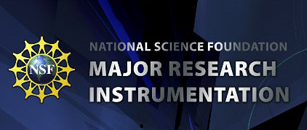Two CSU Chico Team Receive National Science Foundation Major Instrumentation Funding
Congratulations to two CSU Chico teams for receiving National Science Foundation Major Research Instrumentation funding! Our campus has been very successful with these competitive grants, but getting two in a single cycle is particularly impressive.

Congratulations to two Chico State teams for receiving National Science Foundation Major Research Instrumentation funding! Our campus has been very successful with these competitive grants, but getting two in a single cycle is particularly impressive.
Optical Coherence Tomograpy Imaging System and Deep Learning Workstation
Stimulating interdisciplinary healthcare research and education
CSU, Chico faculty members Dr. Hassan S. Salehi, Dr. Ghang-Ho Lee, Dr. Patrick Donnelly, and their colleague at Stony Brook University, Dr. Mina Mahdian, received funding for a swept-source optical coherence tomography (OCT) imaging system and deep learning workstation (DLW). This instrument will allow faculty and students at both institutions (and others) to advance their work on biomedical sensing, imaging, and analytics. According to their proposal, this instrument and associated workstation “will enhance the mission of the Department of Electrical and Computer Engineering, and will stimulate many interdisciplinary research projects in healthcare and industrial non-destructive testing at Chico State. Research groups from the electrical engineering, computer engineering, computer science, and mechanical engineering departments will be among the major users. The OCT imaging system and DLW will also support the established collaborative research with faculty at the Stony Brook University Oral Radiology department. Having an OCT imaging system and DLW at CSU Chico will allow hands-on, high impact research in biomedical imaging and sensing, bioinstrumentation, optics and photonics, signal and image processing, machine learning and pattern recognition for healthcare and industrial applications. One of our key missions is to prepare electrical and computer engineering majors for careers in the biomedical engineering, and an OCT imaging system and DLW will enhance educational opportunities for students at the undergraduate and graduate level.”
Raman Spectrometer
An integral part of nanoparticle research
Dr. Ozgul Yasar, Dr. Nathan Aderson, Dr. Monica So, Dr. Kathleen Meehan, Dr. Zahrasadat Alavi, and Dr. Ozlem Yasar, received funding for a Raman Spectrometer. According to their proposal, “this instrument will enable multiple research activities across the CSU, Chico campus including but not limited to students and faculty in engineering, chemistry, and biochemistry. It will also have a tremendous impact on the learning experience of undergraduate and graduate students across the campus. Raman spectroscopy is an integral part of nanoparticle research that allows for the identification of the composition and characterization of nanoparticles. Raman is a gold standard for material characterization in a wide spectrum of scientific fields, whereby the specific chemical composition of materials is non-destructively determined by analyzing atomic level response to a laser via Stokes and anti-Stokes scattering. Among the variety of applications of Raman spectroscopy, in nanoparticle research, the determination of the molecular composition via Raman spectroscopy is of utmost significance and a valuable technique to verify the success of the synthesis methodology that is used to fabricate the nanoparticles. Raman spectroscopy can also be used to probe crystallinity and structural features, for example, in surface-mounted metal-organic frameworks.”
